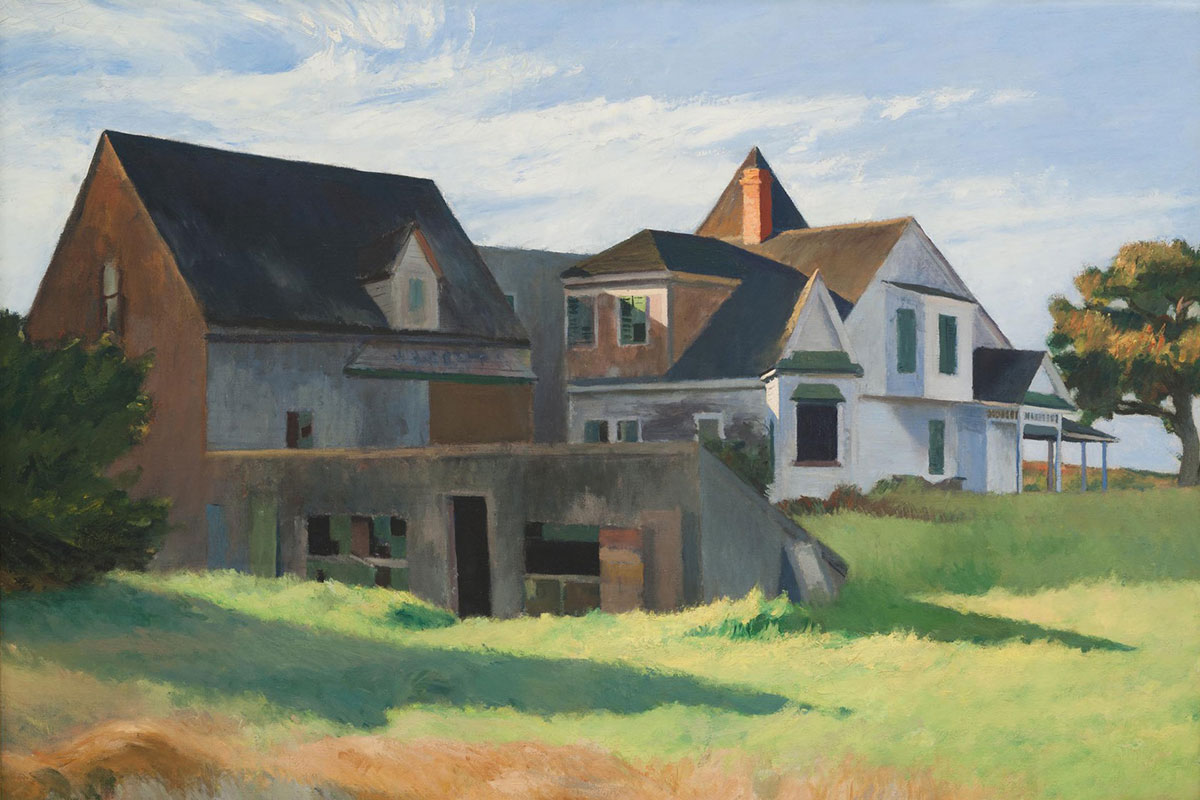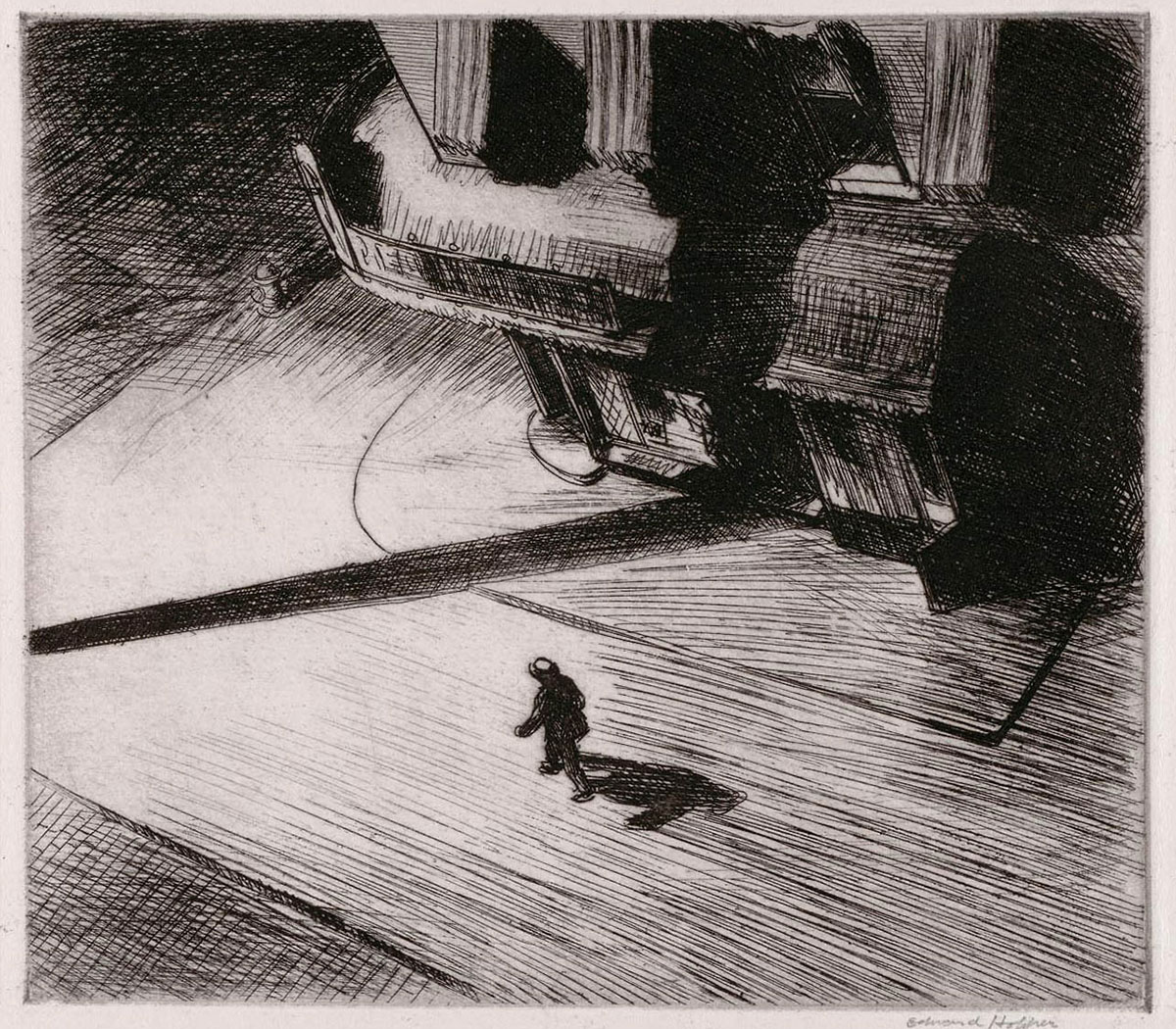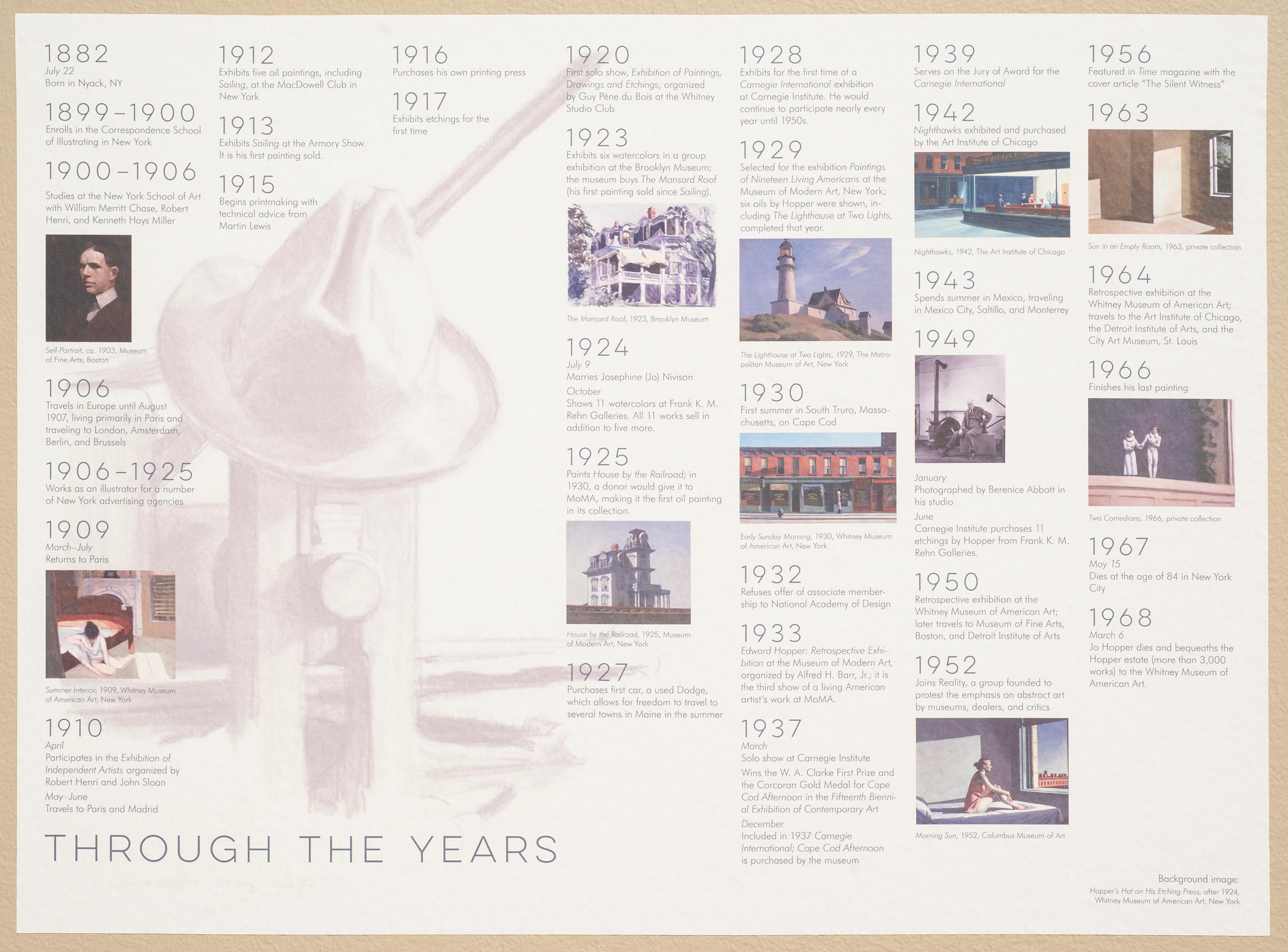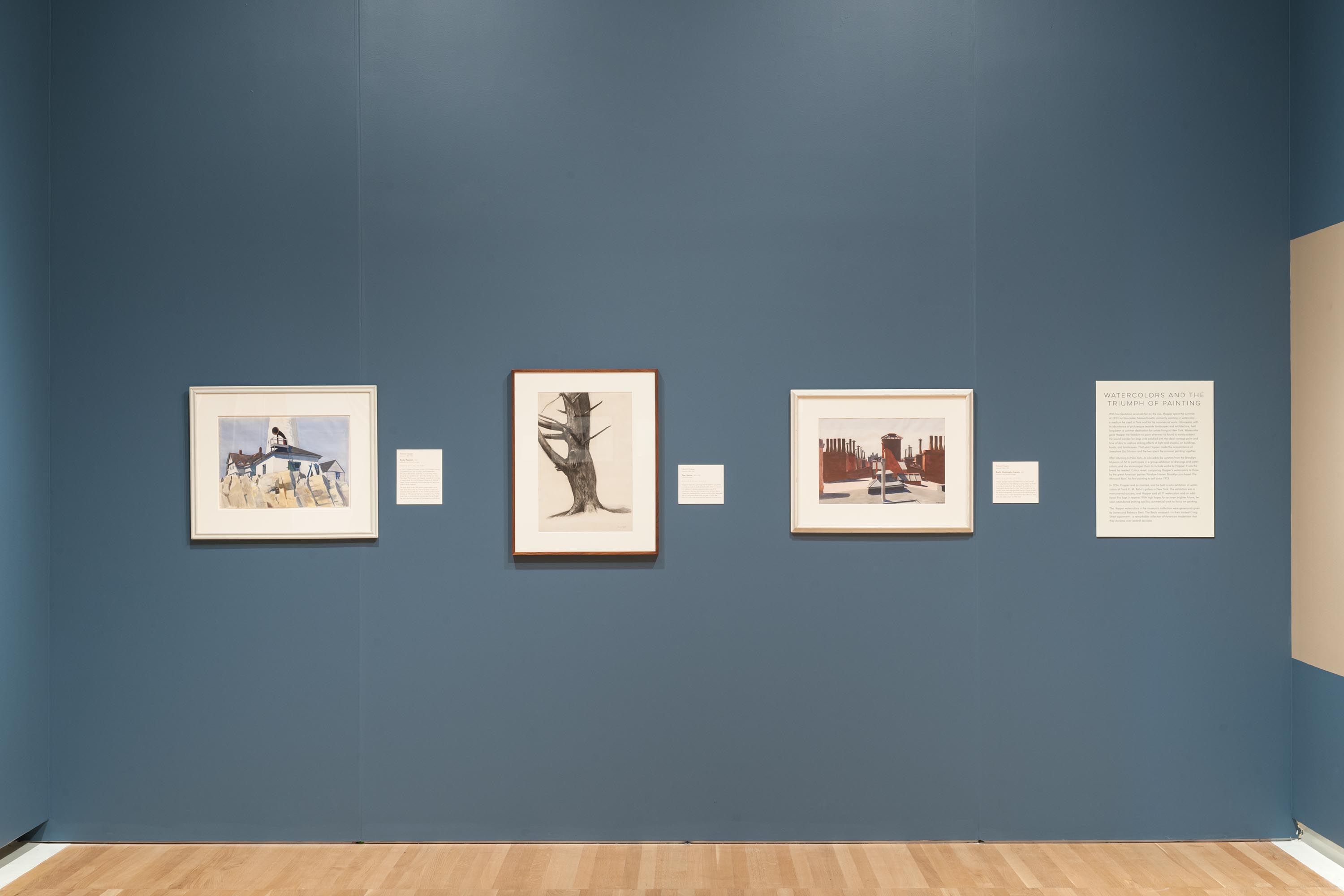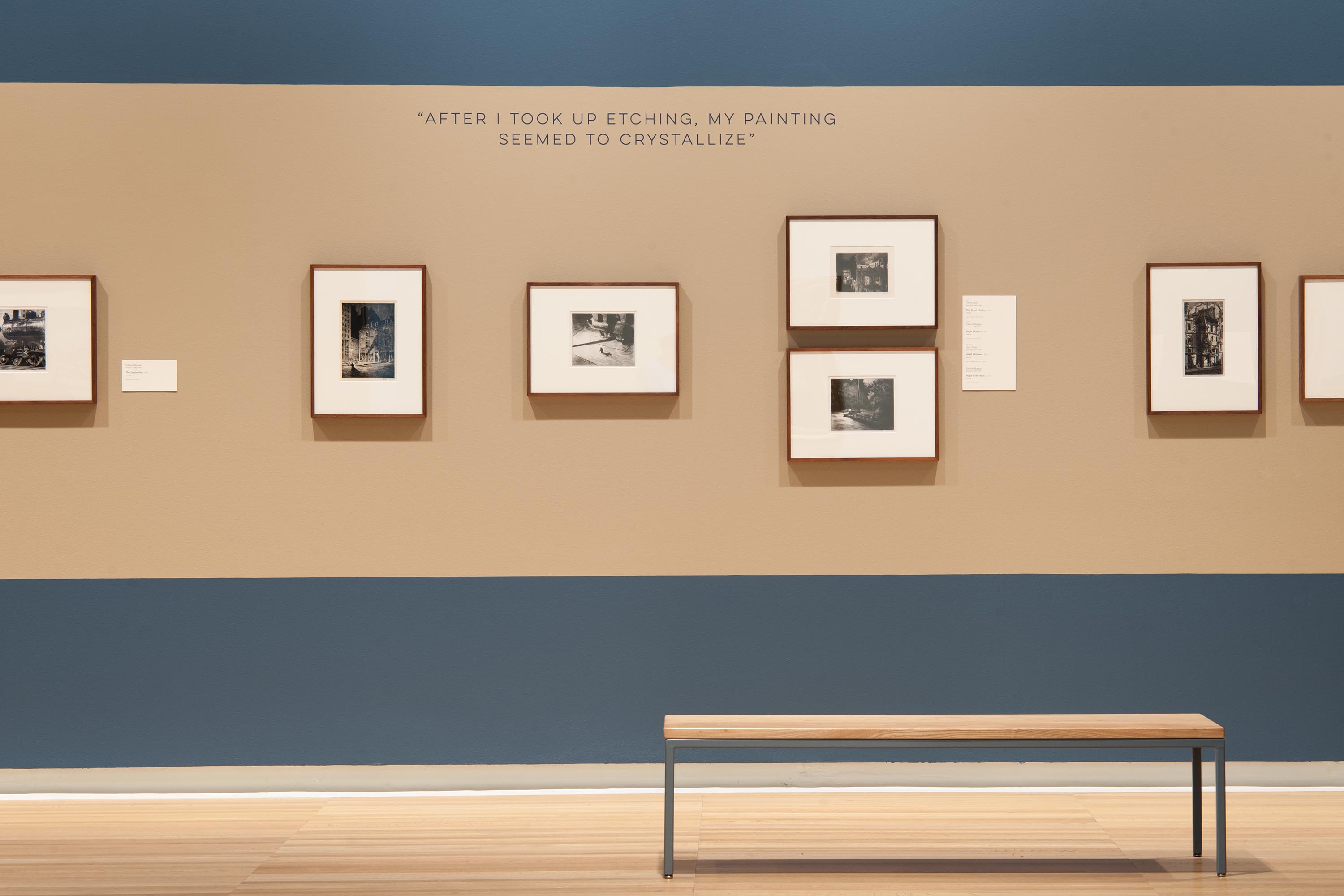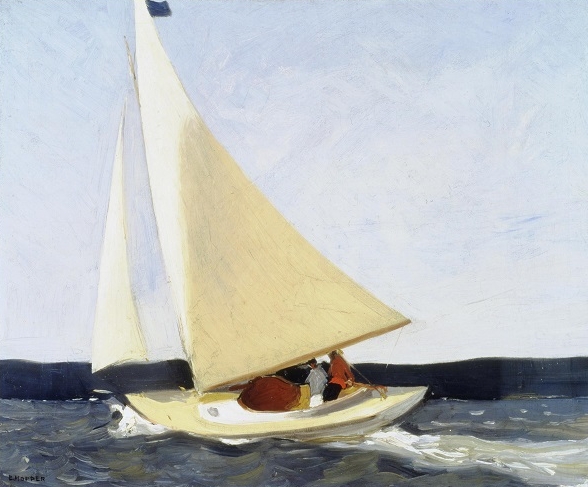A preeminent figure in the history of American art, Edward Hopper began his career in relative obscurity. Although he sold his first painting in 1913, it would be more than 10 years before he sold another. He instead sustained himself as a commercial illustrator and channeled his personal artistic efforts into an incredibly rich period of etching. The resulting prints reveal his transformation into the great painter of the American scene we know today.
The etchings, paintings, watercolors, and drawings on view here, spanning four decades of Hopper’s career, reveal his abiding interest in humble scenes of everyday life and in uniquely American content. He was motivated by the ideas of his teacher Robert Henri, a member of The Eight, a group of artists who stood in opposition of European art and the growing popularity of modern abstraction. But while The Eight focused primarily on urban life, Hopper’s America encapsulates rural landscapes, lone figures, sailboats, and old architecture. These favorite subjects, some appearing first in his etchings, were dominant themes throughout his career, often serving as vehicles for explorations of light and form.
On view in CMOA Collects Edward Hopper is every work by Hopper in the collection of Carnegie Museum of Art, spanning every medium he employed. Never before exhibited together, they reveal the development of an iconic American master, and shed light on the influences that produced his instantly recognizable style.
